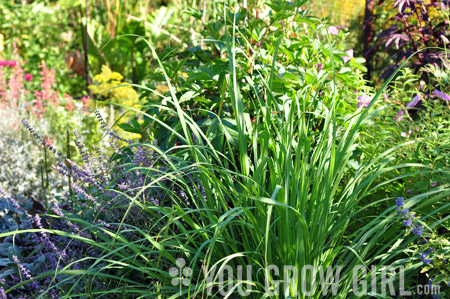
Lemongrass (Cymbopogon citratus) has been making a yearly appearance in my garden in some way or another for some time now, but never like this. My new yard’s sun and sandy, well-draining soil turned out to be the perfect place to grow the sort of plant I have only seen in the tropics. Until now.
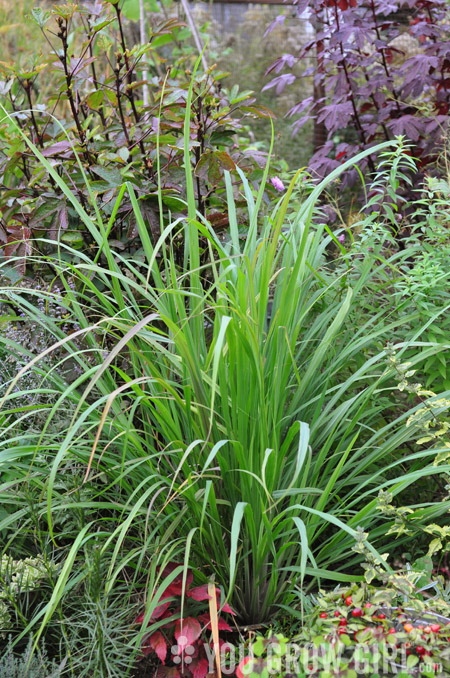
Despite my predilection for tropicals this year, this particular planting wasn’t inspired by Thailand, although it is the country with which this grassy herb is probably most closely associated. Instead, it was inspired by an empty wallet. I started off the growing season with a new garden and a clean slate. I wanted to incorporate some long-leaved grasses into the design, but I could not afford large perennials that would make an impact this year. Lemongrass grows quickly and can take on a nice size and a full shape if the weather allows. I decided to take advantage of the new space to see what I could turn out in the ground rather than in a pot. I positioned the plant next to a few other tropicals: Bronze roselle aka False roselle (Hibiscus acetosella) and tropical sorrel (Hibiscus sabdariffa). I was really pleased with the result and few visitors to the garden were aware that these beauties were all edible until I pointed them out.
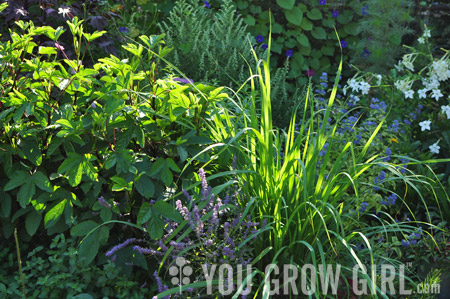
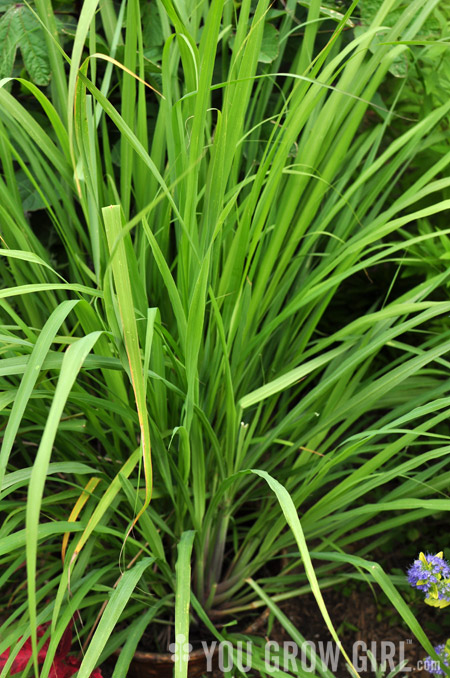
Growing:
I grew this plant from a few healthy stalks purchased at the supermarket and set in a glass of water until they formed roots. The entire thing cost just a couple of dollars total. There used to be an article outlining the steps on this site, but I think it was lost in the move to a new design. Regardless, it really is as easy as I’ve described above.
The only other trick to keeping a healthy plant worth mentioning is that it likes a great deal of moisture. For that reason, I half-buried an old, bottomless container into the ground and planted within that. The slight raised area allowed me to focus more water onto that particular plant, without drowning those around it. I found that I did not need to go to the extreme of creating a bog, but you can plant lemongrass at the margins of a pond or in a bog if you have one. The plant is fairly forgiving – you’ll know you are under-watering when the leaf tips go brown and crispy. Overwatered plants tend to rot at the base.
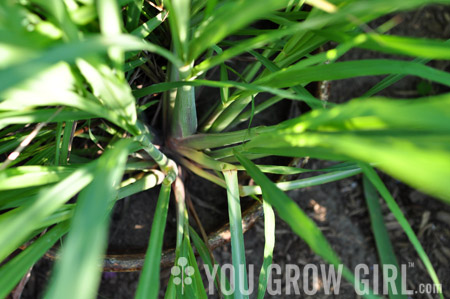
Harvesting:
Now that the killing frost is approaching, I will be harvesting the entire plant. Some of it has already been used in a key lime marmalade, and the bulk of it will be chopped and frozen for future use. I really like the grass blades steeped in hot water as a tea, so I plan to keep a few stems in a large pot by my desk that can be enjoyed through the winter and replanted outdoors next year.
I’ve never grown much less cooked with lemon grass before. It would be interesting to try, especially if it’s that easy to care for.
This is wonderful! I love lemon grass. Now i’m inspired to find some at the supermarket and emulate what you have done. Thanks.
I grew lemongrass this year, too, but the stalks don’t look anything like what I buy at the grocer. I heard it needs a second year to make the stalks?
Love the partially buried bottomless container idea for plants that need more water than their neighbors, thanks for the tip!
Excellent post! Lemongrass seems really easy to grow, and it’s used in plenty of Indian and Thai food recipes… Homegrown is better than takeout, right? :]
I’ve planted them from seed but this year I also planted a couple stalks from the store, just to try it. It worked! Now I’ve just got to decide where to put it inside the house this winter. I over-wintered a bunch of it last year and it just barely made it…
Janet: Did you grow from seed, transplants, or stalks? I haven’t found that to be my experience with transplants or stalks, but it does depend on the location, length of the season, and weather.
Jessica: It’s normal for them to go into a semi-dormant state through the winter. I get enough new growth for tea, but they don’t really start to produce until the day length increases.
In the slow-cooker: chopped lemongrass, a few lemon wedges, sugar and a bottle of high-quality gin. Lovely warm drink for cool nights.
(keep some room temperature tonic water near if people do not want to drink straight gin)
I’m trying to decide if I should bring mine inside for the winter, or just propagate again in spring. That stuff is sharp, yo! My wrists and hands are sliced from my last harvest.
Lemongrass grown from seed is used for essential oil—and is different than the culinary lemongrass that’s only propagated from cuttings. I had read both comfrey and lemongrass were good barriers for the invasive kukuyu grass here in HI. I bought seeds—and then learned I wasn’t going to get the thick root system I was expecting.
My lemongrass came as a plant in one of those multi-herb pots from Loblaws. I am still surprised I don’t have thick stalks. Should I bring it in for the winter?
Janet: I think the lack of space was the problem. Those mixed planters are tight, and don’t provide the space the lemongrass needs to make thick stalks.
You could certainly overwinter it and plant it out next year.
Rebecca: Yeah, the other lemongrass grows profusely in the Caribbean… I walked through fields of it! Smells delicious but no culinary value that I am aware of.
Thanks for the tip. I think I’ll try that!
I rooted a $2.00 bunch of lemongrass bought in Chinatown and planted the 3 stalks into a garden bed and grew massive amounts of lemongrass over the summer which I used for tea and cooking. Very pretty, aromatic and said to deter mosquitoes. I loved crushing a few leaves while working in the garden to release the lovely citronella scent. Just pulled them all for friends as I didn’t think it would survive the winter snows. I found it needs lots of room as you can see from the photo. So I think next Spring I will plant in large planters as my garden growing area is small.